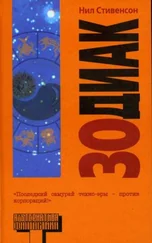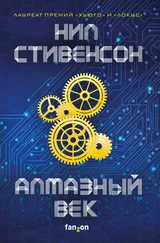The barracks had been garrisoned by Indians until late in the current campaign season, when Chinese volunteers had broken into the ground floor and occupied it. The Indians who’d been using it as a base retreated up the stairs to the first story, then, a few days later, to the second story and the roof. Since then, after being resupplied by drones, they’d made some headway with a counteroffensive down a fire stairway, but at the moment held only a beachhead on the disputed first story, three-quarters of which was still Chinese-held. Barricades had been thrown up by both sides to fortify that line. The Line of Actual Control, in other words, had become a three-dimensional Surface of Actual Control, and you needed augmented-reality glasses to visualize its convolutions.
Which was not a mere figure of speech. The army had given Laks’s crew access to such equipment. In virtual-reality mode, sitting far from the front, you could pull up a 3D map, Google Earth style, and pan and zoom up and down the length of the Line all day long, or until you were overcome by motion sickness. From a distance it looked fat and solid but as you zoomed in, it frayed to a loose-spun yarn. He remembered taking art classes in school, learning that instead of laying down a simple firm stroke you should make many fine scratches and gradually thicken the ones that were in the right place. That was how the Line looked when you zoomed in, each scratch being the record of where it had been for ten minutes three weeks ago.
When you put the device in augmented-reality mode it showed you nothing unless you were actually there, with line of sight to that fiber bundle. The day before Laks and the School were inserted, Major Raju drove him, in a snow machine, up to the top of the western ridge so that he could have a look down into the valley. The barracks, hundreds of meters below, looked like it had been trapped in glowing red cobwebs. Laks used the UI to filter out all but the last month’s data. He was then able to watch in time lapse as the front crept down from the opposite ridgeline, then suddenly formed a fist-like salient that snaked down a tributary ravine and punched in the door of the barracks. For a few days this beachhead had been connected to the main Chinese position only by a frail stalk, but they’d broadened and fortified it while the Indian defenders had been distracted trying to maintain their toehold on the upper story.
The Indians weren’t without tricks of their own. For a while they’d been cut off, since the Chinese salient completely surrounded the building. All resupply had been through drones. There’d been no way to send in or to evacuate personnel. But on the west or Indian side of the barracks, the valley wall was extremely steep: virtually a cliff rising to slightly above the height of the building before laying back to a more moderate slope that ran up to where Laks was looking down on it. During the last couple of weeks, the slot between the building and that cliff had become about half filled in with snow. Volunteers higher up the slope had encouraged more snow to avalanche down. In this way they had managed to fill it in entirely. The roof of the barracks, previously an island, was now connected to the slope just above and west of it by a snow bridge: a narrow tamped path that could be crossed by volunteers, one at a time, on makeshift snowshoes. To either side of that path the snow angled down like a rampart to the valley floor around the barracks.
The Chinese occupying the ground floor could, in theory, just go outdoors and walk right up that rampart to the path, but climbing it was nigh impossible when reinforced and well-fed Indian volunteers were raining down hard-packed snowballs the size of watermelons. The Chinese had made an effort to undermine it, but the volunteers above them on the ridge could fill in any new excavation with targeted avalanches faster than the Chinese could dig.
This was the point where the AR interface became more trouble than it was worth. Laks just shut it off and used the device as plain old see-through glacier glasses, the better to watch the arrival of Lan Lu.
Performative warfare (to adopt Pippa’s terminology) followed a logic opposite to that of the twentieth century, when concealing troop movements had been all-important. So they knew exactly when Lan Lu was going to come down from the eastern ridge. They could watch it on the live streams from four different camera angles, with chyrons streaming across the bottom in layers showing the Vegas and Macao betting lines plus live comment feeds in four alphabets. For Lan Lu had been at the top of the leaderboard for three months.
The only reason not to just watch it that way from the warmth of a command tent kilometers away was so that they could grab some footage of Big Fish brooding down over the barracks as his soon-to-be nemesis made his triumphal entry to the ground floor at the head of his crew.
Laks didn’t understand how Mandarin worked but it seemed like Lan Lu was both a singular and a plural noun depending on how you used it. Here, in its singular usage, it denoted one guy. It meant Blue Heron. Plural, it meant his whole crew of Blue Herons, who were called the Flock. They favored knee-length changshan jackets in dark blue slubbed silk, textured and yet shimmery, with protruding white cuffs, and gray trousers beneath. They were from Hong Kong. They practiced a style of wushu that had originated in Tibet but had been somehow exported to Kowloon late in the twentieth century and re-interpreted by wushu schools there. Much had been made of its Tibetan origins by Chinese propagandists who wanted to get people to believe it was an example of benign cultural integration. But this dude Lan Lu was a Cantonese speaker by upbringing, a Mandarin speaker when it suited him. And as far as Laks could tell there was no trace of Tibetan ancestry in any of the Flock. Their style relied on enveloping arm movements, said to be inspired by herons’ wings, out of which came vicious pinpoint strikes like the ones that herons used to stun and impale small ground-dwelling creatures with their beaks. Whenever possible those strikes were aimed at nerve centers where they would inflict crippling pain out of proportion to their apparent power.
Laks could well understand how effective that system would be inside the barracks. He’d spent hours scouting the place in VR. The building was low-ceilinged and cluttered: not a good environment for whirling a long stick around. Lan Lu would have good odds of closing distance and getting into close quarters fighting range where he would have an advantage. Not that gatka fighters didn’t know how to grapple. Kabaddi was half grappling. But by convention most of their practice took place in rule-bound competitions where the dangerous nerve center strikes were against the rules. So they didn’t have that stuff programmed into muscle memory. And when the adrenaline kicked in your muscle memory was all you had to go on.
It took Laks all of about sixty seconds to come up with a plan of attack. It was simple and kind of obvious—but the more experience he got, and the more he perused old historical accounts of his forebears’ tactics in the Punjab, the more certain he became that simple and obvious would defeat complicated and clever 90 percent of the time. “We’ll play kabaddi,” he said, “until we don’t.”
THE MARBLE MINE
All of Rufus’s comings and goings were via New Marble Mine Road, which was passable even to ordinary cars once he had gone up and down the length of it and shoveled gravel into some big holes and removed a few rocks. These had tumbled down out of the high ground to either side. The road ran sometimes parallel to, sometimes right down the middle of, what was theoretically a watercourse. T.R. would have called it a stochastic river. In its upper reaches, within a mile of the mine itself, this was as dry and dead as any other part of the Chihuahuan Desert. Farther down, it was joined by a couple of other such arroyos in a flat pan that in any other part of the world might have been a pond, or at least a marsh. Here it was a stretch of low yellowed grass that apparently sunk roots deep enough to strike underground moisture. This was interspersed with cactus and other such plants. In a few deep crevices, actual standing water could be observed, especially as September gave way to October and the temperature dropped.
Читать дальше

![Нил Стивенсон - Криптономикон [litres]](/books/23868/nil-stivenson-kriptonomikon-litres-thumb.webp)








![Нил Стивенсон - Лавина [litres с оптимизированной обложкой]](/books/414066/nil-stivenson-lavina-litres-s-optimizirovannoj-ob-thumb.webp)
